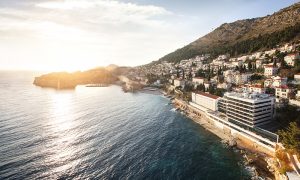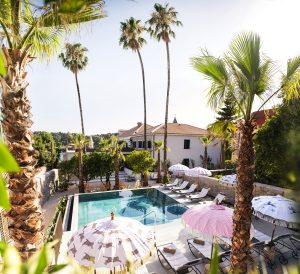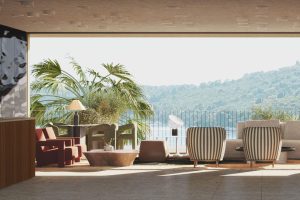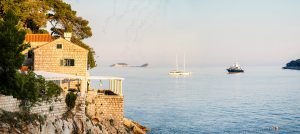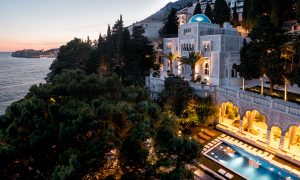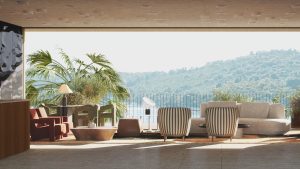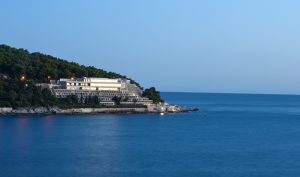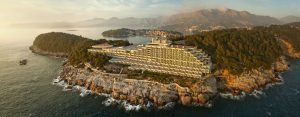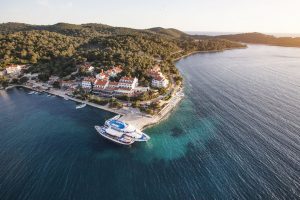Silk production in Konavle region
Konavle has for centuries been renowned for the production of silk thread, which was used for the decoration of men’s and particularly women’s traditional costumes. Silk was an exceptionally important fabric here since it was used in weaving Konavle folk dress.
It is believed that the production of silk and silkworm breeding in Dubrovnik’s Konavle region dates back to the 9th century. In the 15th century, the Dubrovnik Republic encouraged silk production on several occasions, and it is well known that in the 19th century a silk spinning mill existed in the Ploče area. Yet, the production of silk in Konavle never became an industry; it continued to live only in local households where women from Konavle had a great respect for the tradition of breeding silkworms and making silk. They believed that silk had the power to heal and protect, so they used silk ornaments as a decoration on their folk costumes, which were taken out of their special storage chests only on certain occasions.
The art of silk production was passed among women from generation to generation, thus being a part of their regional identity and a family tradition to which they remained loyal. It was known as “the job” of young girls before they got married because silk was the most important material for bridal clothes. The production process took place in the rooms of the women every spring. Every woman of Konavle had to raise enough silkworms to produce her own yarn for her individual embroidery. Until marriage, she would produce enough embroidery for various occasions and circumstances. For a long time, it would be her only accessory and identity card. This family tradition continues in the present time.
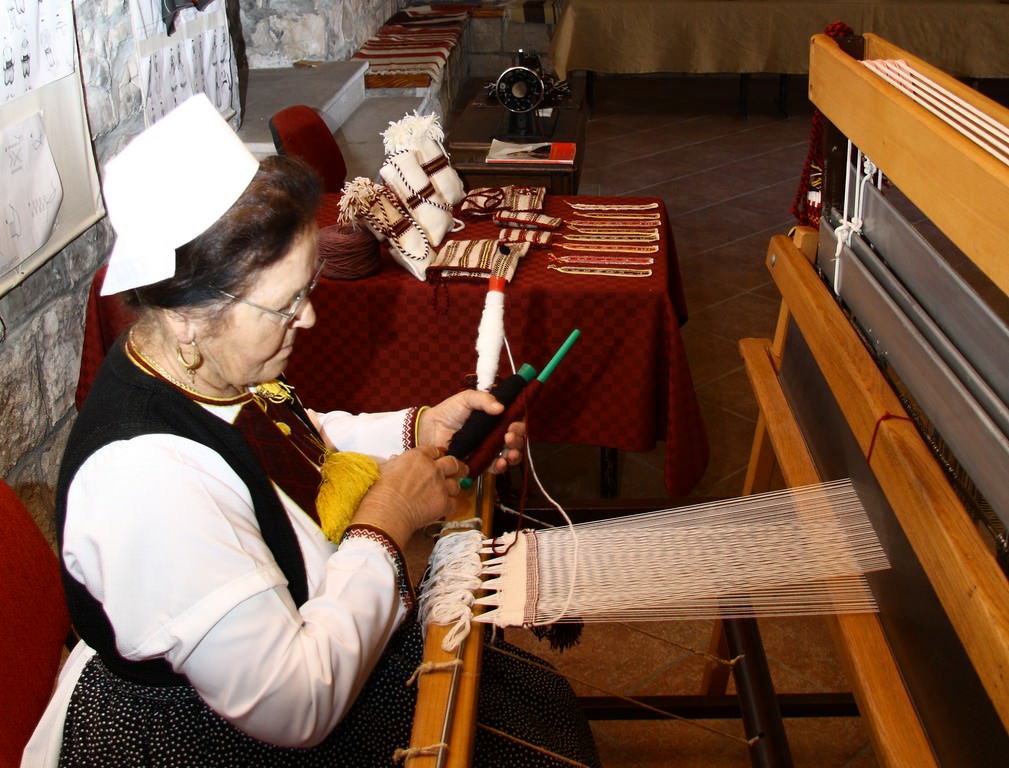
The process of silk production
The silkworm story began in spring when the leaves of mulberry trees reach the size of a mouse’s ear. After spending winter in a cool and dry place, the silkworm ova were taken to the church for a blessing, after which they were kept warm in women’s bosoms for several days. Every morning the women checked whether caterpillars had hatched from the ova. When they did, the women placed a piece of cloth on a wattle frame (locally called jesa) covered with young mulberry tree leaves, on to which the newly hatched worms climbed immediately.
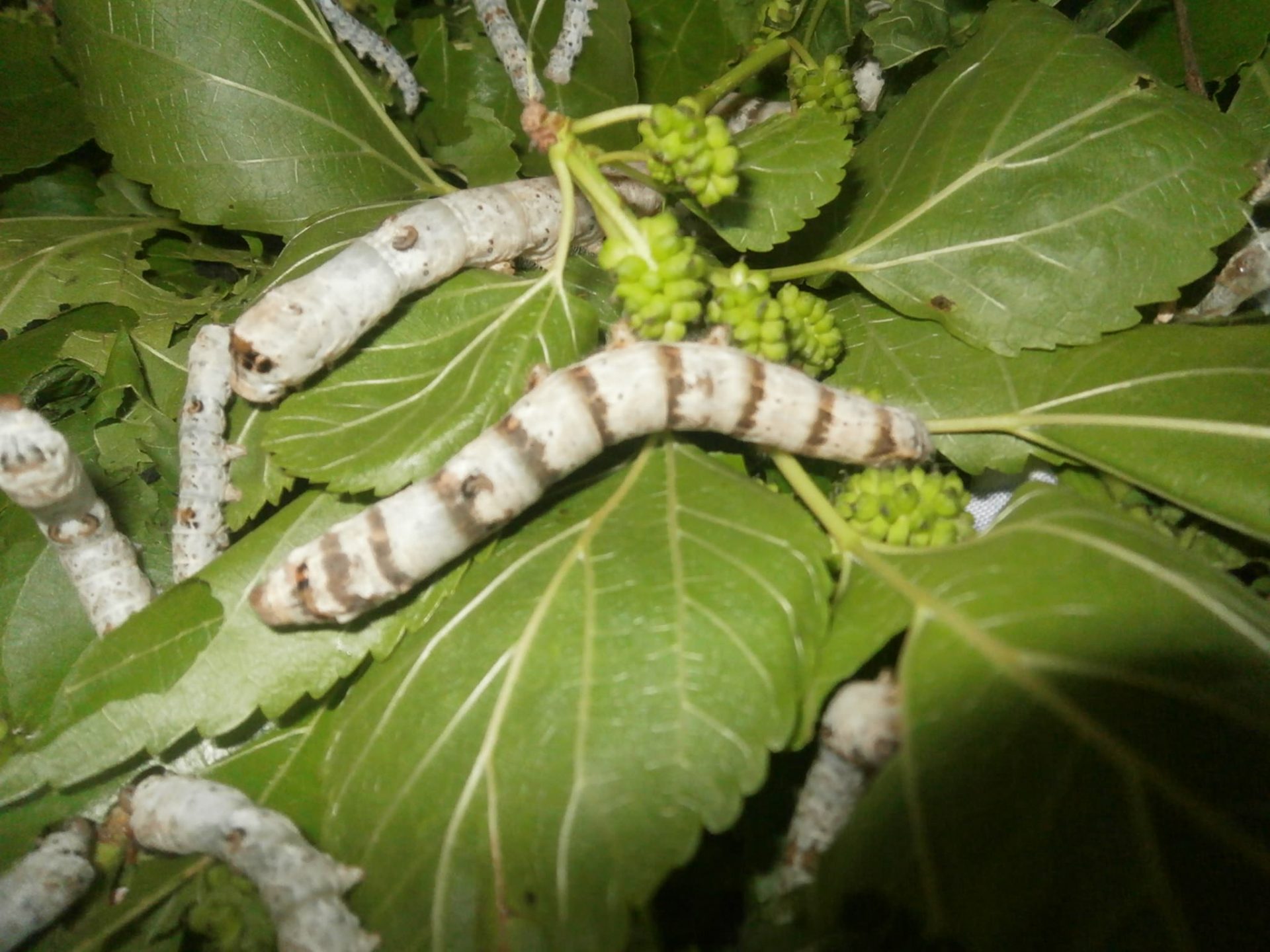
That is when the feeding cycle began, which lasted 28 days. Within that period, they ate and grew rapidly, sleeping for four days. These were the days which silkworms spent resting, with their heads high up, not eating, requiring peace and quiet. By nightfall, they shed their old skin, and the following morning continued to eat till the next sleeping period – says Antonia. On the 28th day they ate the most, from morning till evening, in order to begin spinning their cocoons. The women of Konavle placed Spanish broom and twigs around the wattle frame for the worms to climb on and start to spin their cocoons.
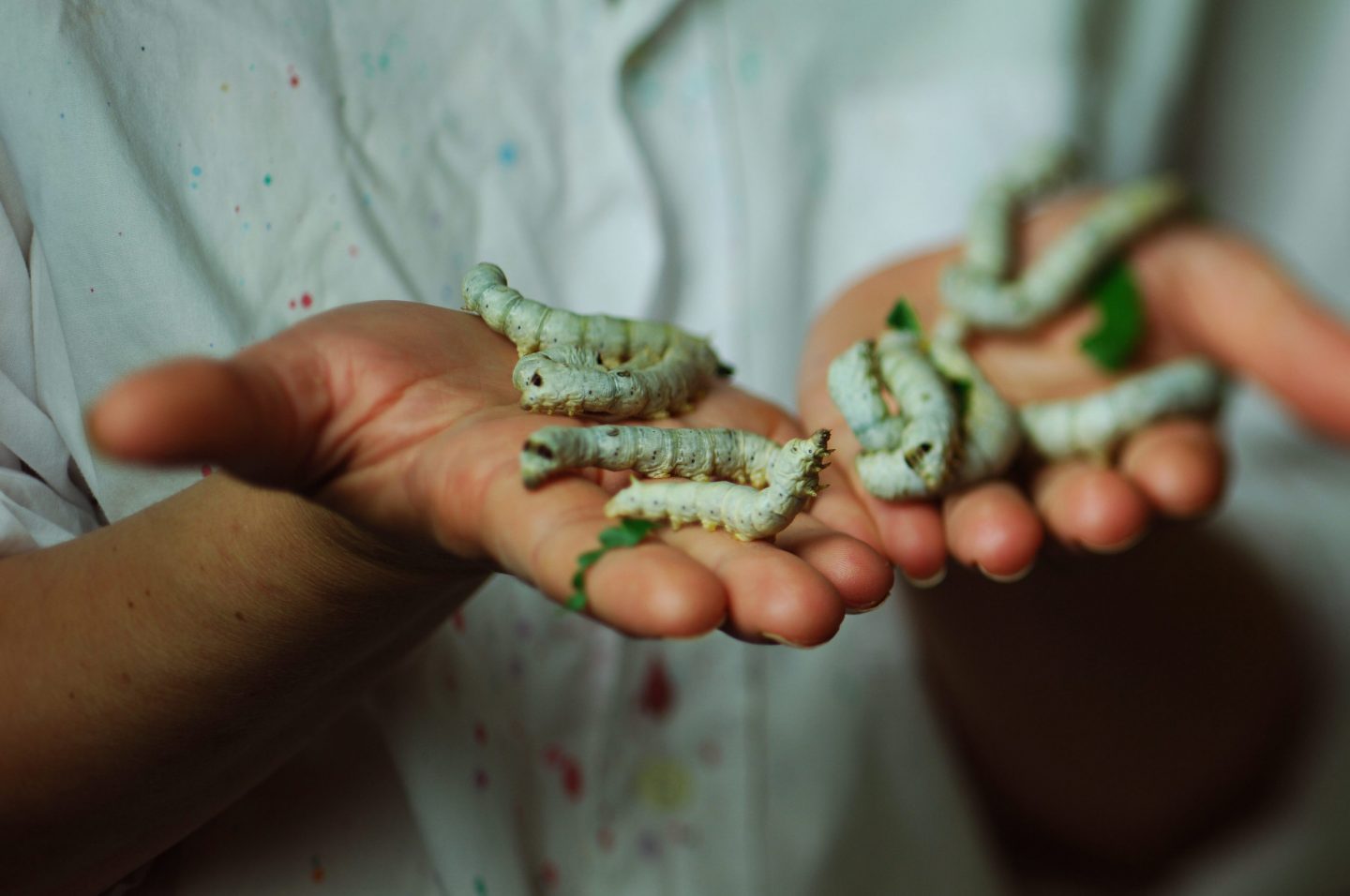
They lived in their new homes for 15 days before completing their metamorphosis into butterflies. On the 15th day, the butterflies left the cocoon and searched for mates, in whose «embrace» they remained for two days. The butterflies, i.e. moths cannot fly. They do not have digesting systems and live briefly, yet long enough to lay ova for the next generation.
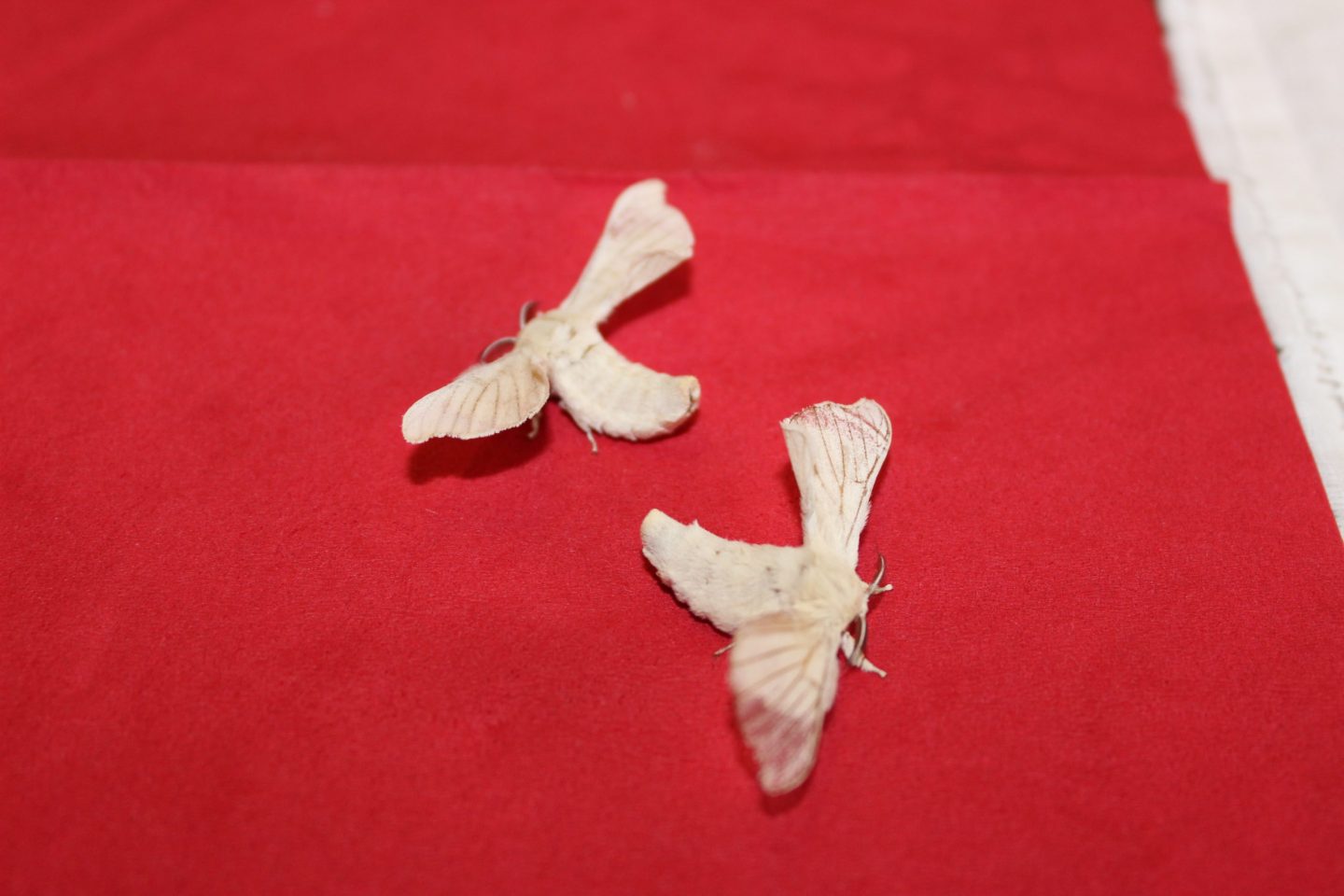
One cocoon one can produce from 1500 to 2000 meters of silk thread.
Konavle women dyed the silk themselves in sophisticated pastel colours in order to decorate their folk costumes. The dyes were prepared from various plants and fruits. Red, which is the predominant colour of Konavle embroidery, was obtained from Sappan wood (Caesalpinia Sappan) powder. Black was obtained by boiling Pistacia lentiscus; yellow by boiling crab apple (Malus sylvestris) or pomegranate (Punica granatum).
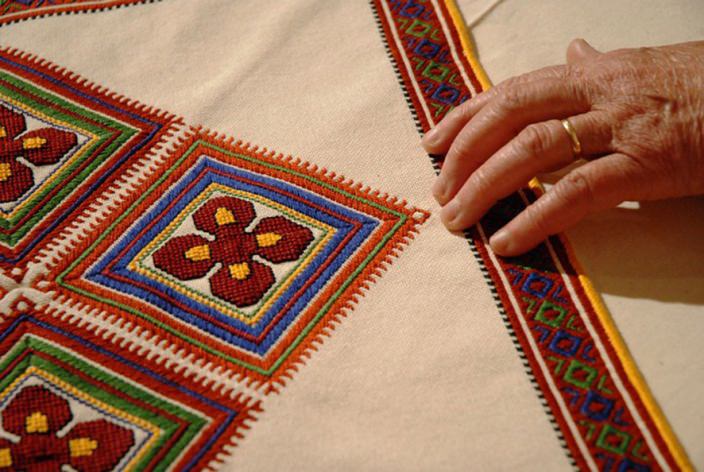
Today
Over time, these exquisite costumes, passed on from generation to generation, were worn less and less often. During the Croatian War of Independence (1991-1993) the people were expelled from Konavle and their homes burnt and hundreds of such inherited costumes were destroyed.
And then, immediately after the war, diligent women of Konavle returned to their old tradition and the beautiful tradition of the silk thread production came back to life. They started breeding silkworms again and making embroidered costumes, which they proudly wear today on the special occasions of traditional ceremonies as a part of their regional identity and a family tradition to which they remained loyal.
You, also, can be a part of this beautiful tradition.
From the early spring to late fall, the time when the silkworms are raised, workshops on producing silk are held throughout Konavle.
For more information contact your concierge and ask about Mrs. Antonia Rusković and her atelier and silk workshop in Konavle. This is one of the very few places in Europe where silkworms are still raised and she is one of the rare persons who still preserves the tradition of silk production. All of her products are original, authentic and inspired by the joy of creating.
The embroidery that she knits in her workshop is used for the production of applied and decorative items with the purpose of conserving the traditions that were passed on to her by her grandmother and great-grandmother. The diligent hands of Mrs. Antonia Rusković, her enthusiastic spirit and the love for this unique “craft” are a true example of preserving the heritage and antiquity of one’s culture. All you need to do is enter her atelier, to watch and to admire. Who knows, perhaps you will fall in love with this ancient craft and will find an authentic piece of embroidery from Konavle to take home with you as a souvenir.
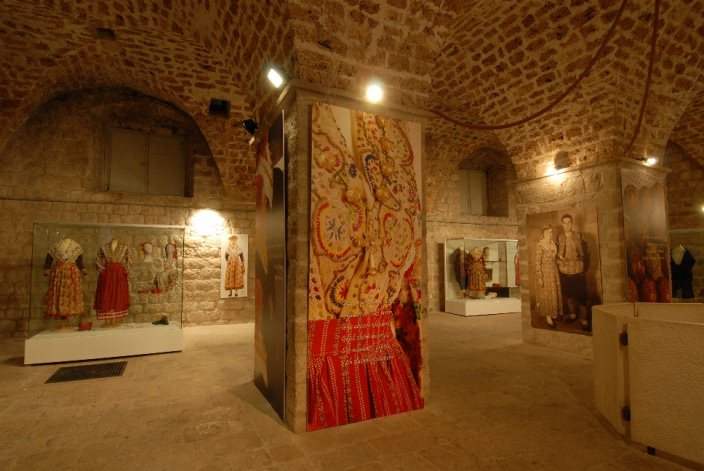
If you are not heading all the way to Konavle, you can exhibit the riches of the national costume in
ETHNOGRAPHIC MUSEUM RUPE in Dubrovnik Old Town.
The Ethnographic Museum is located in an old granary dating to the 16th century, where it is possible to see just how much attention the residents of Dubrovnik gave to the storage of grain. The Dubrovnik Republic kept all the state reserves of wheat, barley and millet in deep silos called Rupe, carved out of stone and coated with a water-proof material that kept the grain at a temperature of 17 Celsius.
The traditional rural economy and architecture of the Dubrovnik region is found on the First Floor. Folk costumes and textile handiwork can be seen on the 2nd Floor.
Working hours in summer (22 March – 2 November):
9.00 am – 4.00 pm, on Tuesdays closed
Visit us on Instagram


